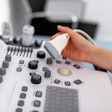While female representation has improved in neuroradiology, the gender gap persists in this radiology specialty, according to a presentation given at the American Roentgen Ray Society (ARRS) annual meeting.
In her presentation, Tina Young Poussaint, MD, from Boston Children's Hospital and Harvard Medical School in Massachusetts, discussed the state of neuroradiology regarding female representation. This includes authorship, academic leadership, and funding from the National Institutes of Health (NIH), among other aspects. She also discussed strategies to help increase representation.
“I think it’s very important that women are very ambitious, and they want to be promoted and celebrated,” she told AuntMinnie.com. “Many of them aspire to be leaders and it’s a myth that women are not interested in this.”
Female representation in radiology varies by specialty. A 2022 study found that while breast imaging has 79% female representation and pediatric radiology has 45% representation, other specialties such as abdominal and musculoskeletal radiology have lower representation at 35% and 28%, respectively.
Neuroradiology meanwhile has about 23% female representation, according to the same study. Poussaint said that while there has been an increase in female authors in this specialty, the fraction of first and corresponding authors is low at 34% and 24% to 28%, respectively. She added that women are behind men in h-indexes -- these capture research output based on the number of total publications and citations to published studies -- at nine versus 17.5. Also, in academic radiology, men hold 87.5% of leadership roles.
Women in academic medicine, including neuroradiologists, have retention issues relating to gender differences. Women in academic medicine face issues such as the burden of family and childbearing responsibilities, lack of mentorship, sexual harassment, implicit gender bias, and microaggressions, among others.
Poussaint said one solution to bridge the gender gap is for institutes to commit to creating inclusive environments with programs to address productivity, with advancement leading to success and retention.
Additionally, myths persist about women in the workplace, including in academic medicine. Poussaint highlighted a 2023 report dispelling such myths and instead reporting the following: women are more ambitious than before the COVID-19 pandemic; the “broken rung” is the largest obstacle women face in their careers; microaggressions have a large and lasting impact on women; and both women and men value flexibility.
Of the 162 scientific journals dedicated to radiology, just nine have female editors in chief, Poussaint noted.
Strategies to increase representation include recognizing the importance of women in leadership and actively recruiting women, as well as being allies to women. She added that societies in radiology can identify barriers and work on solutions.
“I think it’s also important that radiology is marketed to talented female medical students and that we try to create environments that prevent burnout and promote wellbeing, as well as foster flexible work opportunities,” Young said. “I also think it’s important to recognize and address the Family Medical Leave Act and the Fair Labor Standards Act and make sure your programs actually comply in that regard.”



















